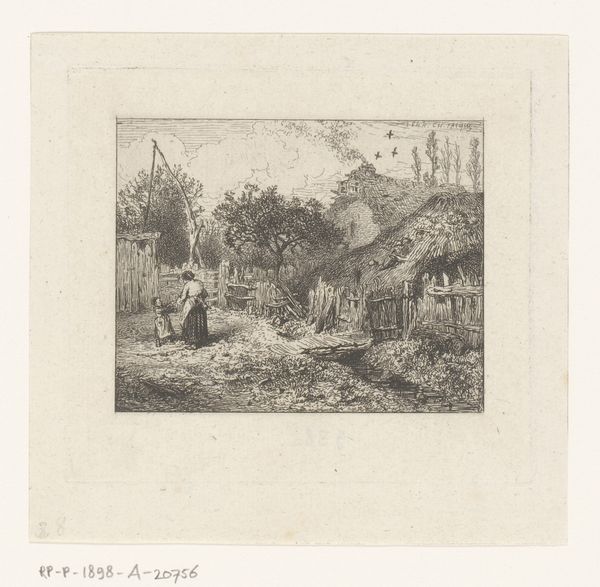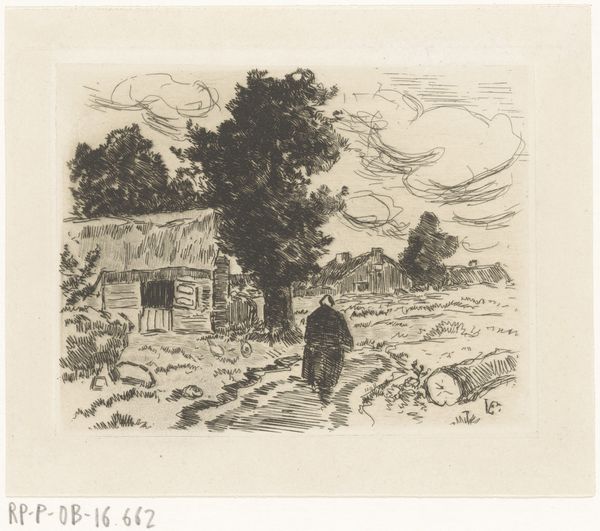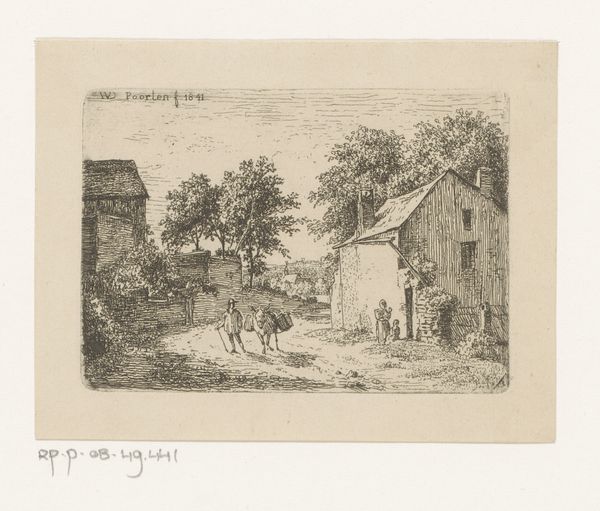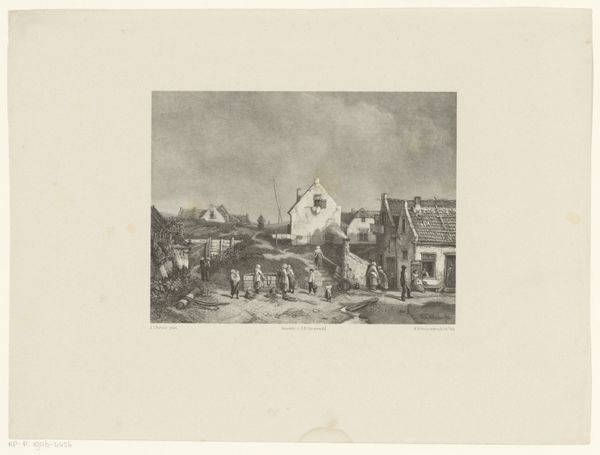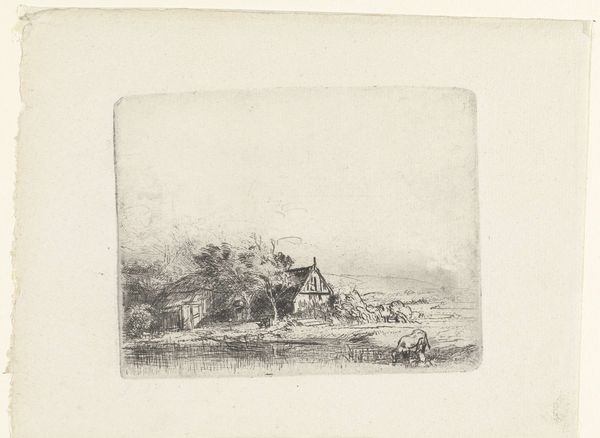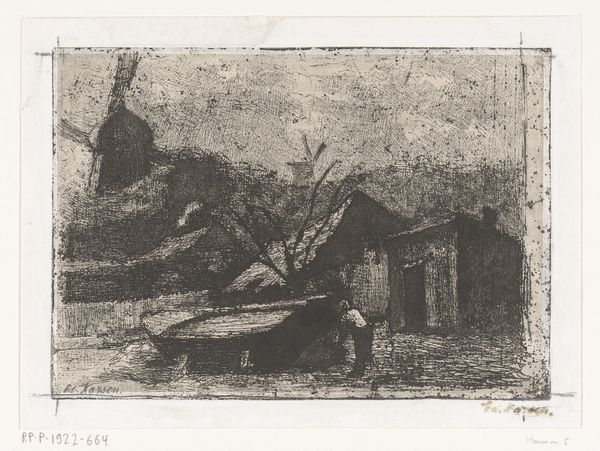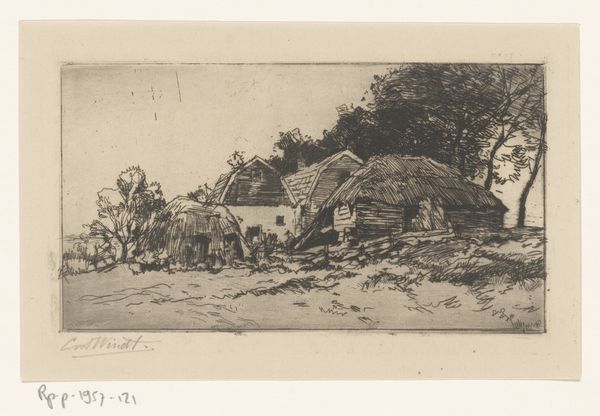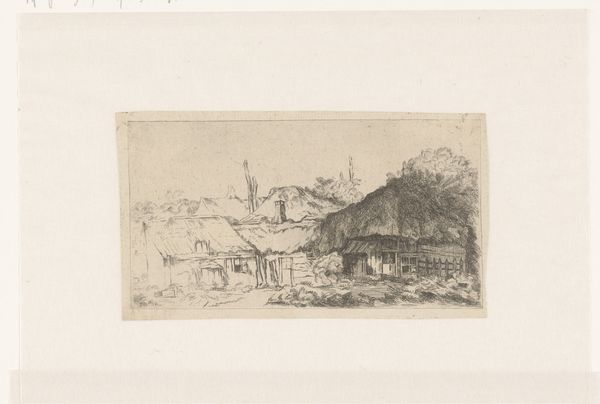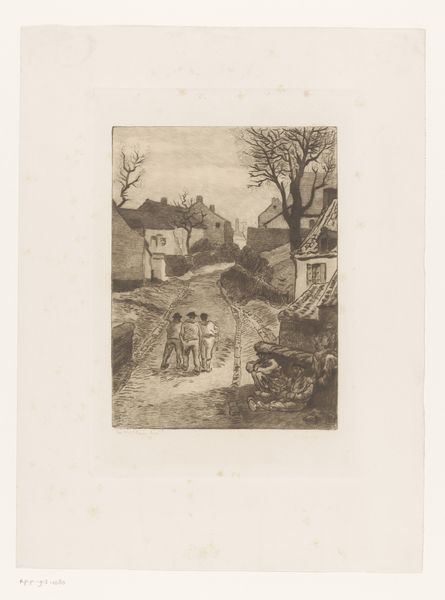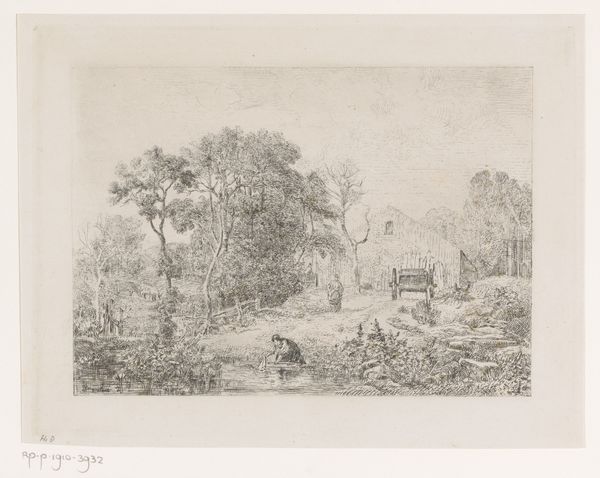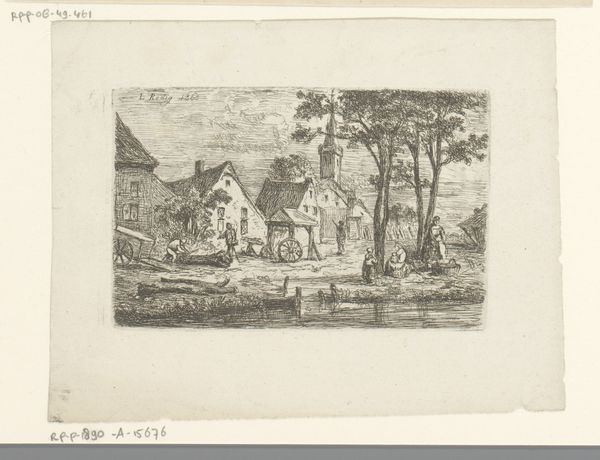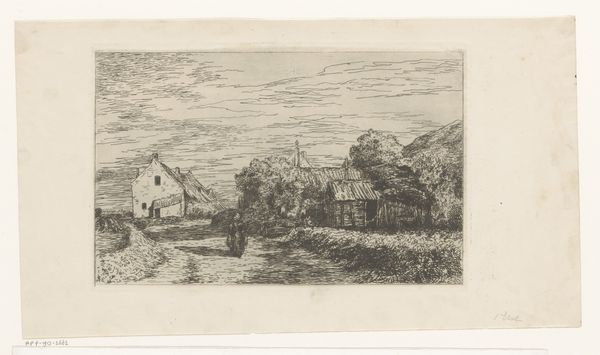
print, etching
# print
#
etching
#
landscape
#
etching
#
romanticism
#
genre-painting
Dimensions: height 83 mm, width 92 mm
Copyright: Rijks Museum: Open Domain
This print, by Charles Jacque, presents a woman and child on a farm. Its effect depends entirely on the method used to create it: etching. This intaglio process involves covering a metal plate with a waxy ground, then drawing through it with a needle to expose the metal. The plate is then immersed in acid, which bites into the lines. After the plate is inked and wiped clean, the ink remains in the etched lines, ready to be printed onto paper. Jacque’s skill is evident in the varied textures he achieves through different densities of lines, creating a sense of light, shadow, and depth. Notice the thatched roof, created with dense, multidirectional marks, contrasting with the sparse lines defining the sky. Jacque uses line work to describe not just the scene, but the feel of the materials depicted. The print invites consideration of the labor involved in both its creation, and the farm life it depicts, reminding us that art-making, like agriculture, relies on skilled work. This connection between process and representation prompts us to reflect on the value we assign to different forms of labor.
Comments
No comments
Be the first to comment and join the conversation on the ultimate creative platform.
